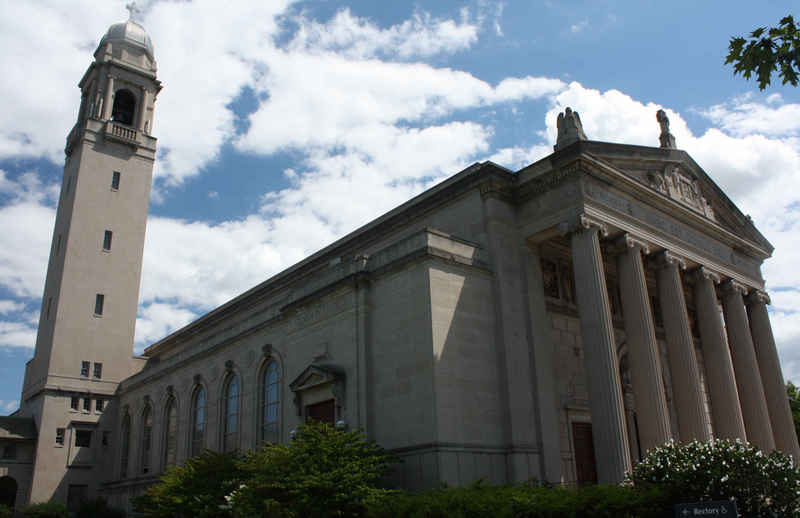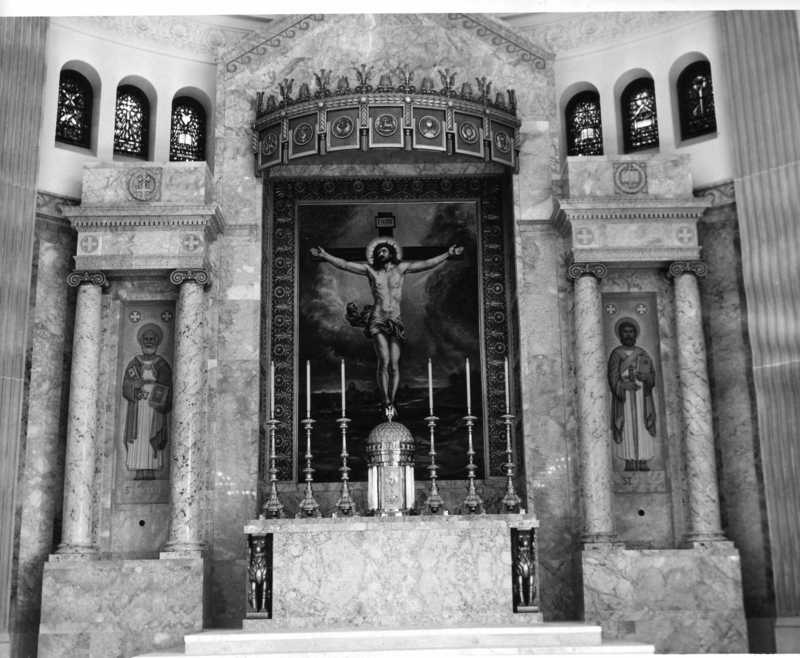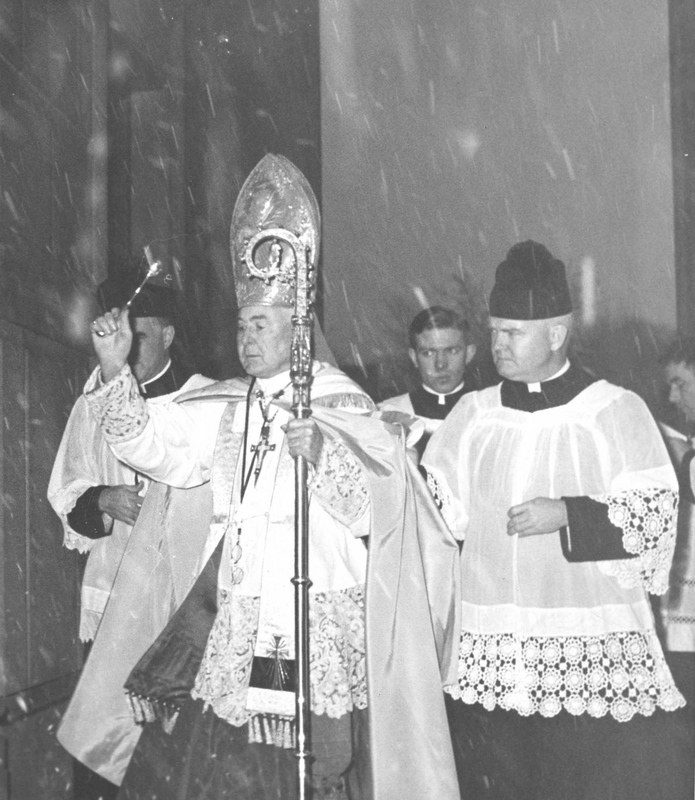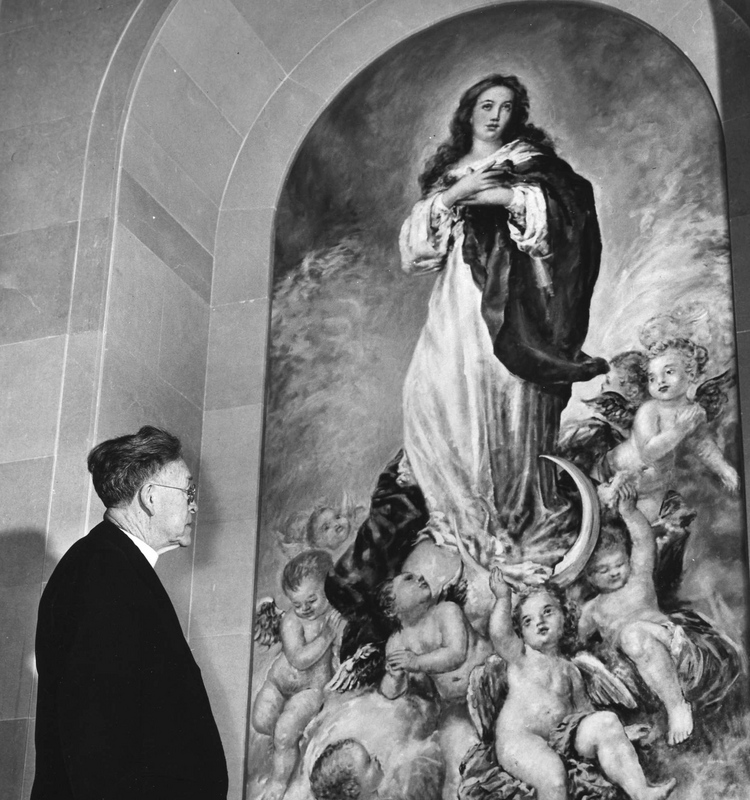Saint Ann Church
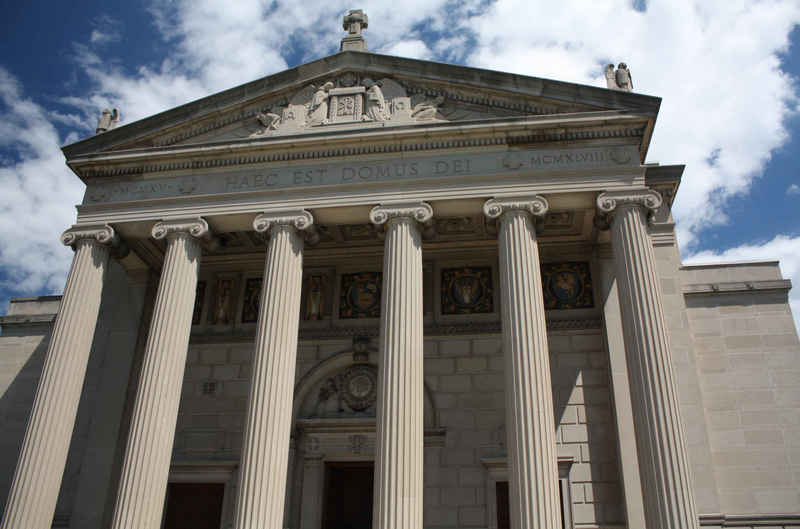
Father John Mary Powers was nothing if not enterprising. When he was assigned to establish a new parish in 1915, he influenced local government and citizens to develop the neighborhood as well. For over half a century, he led the Saint Ann’s community with conviction, creativity, and an exceptional eye for secondhand bargains.
In 1915, Father John Mary Powers was assisting at St. Thomas Aquinas parish in Cleveland when Bishop Farelly assigned him to create a parish for families residing in the village of Cleveland Heights. Fr. Powers walked up Cedar Glen from the eastern end of the streetcar line and continued roughly one-half mile beyond the top of Cedar Hill. There, at the southeast corner of Cedar and Coventry Roads he found a suitable site. He then set three goals: build a church that could serve about 40 families, construct a school, and extend the public transportation line into the neighborhood. Within four years, he had fulfilled the first mission: the new wood church would continue serving a growing Catholic community for 33 years.
Fr. Powers turned next to his school and transportation goals. An advocate of housing and residential space, he successfully argued that no commercial enterprises should border the church grounds. With this commitment from the municipal government, he then set about building his school. The three-story design technically defied city code, but Powers got around this issue by disguising the building as a two story structure.
On a trip downtown for a haircut in 1925, Fr. Powers stopped into the recently failed First National Bank on Euclid Avenue. According to Powers, he went into the bank to buy a desk. However, he left with myriad additional items: the rudiments of a collection that would ultimately furnish a new church. It would take 25 years to convince skeptical Cleveland bishops to approve plans for construction.
In 1948, ground was finally broken for the current St. Ann Church. Designed by Walker and Weeks, it incorporated an organ from Massachusetts Pilgrim Church; oak woodwork from one of the Hanna family mansions; marble from the Ritz-Carlton Hotel in Manhattan; and chandeliers, choir loft railing, columns, and brass and bronze doors from the First National Bank.
Fr. Powers remained in his leadership role for 51 years before retiring in 1966. He was a tireless promoter of fair housing, pursued interests with theater productions (The Powers Players), and guided an active greenhouse and floral enterprise for church events for many years. St. Ann Church is on the grounds of the Communion of Saints Parish in Cleveland Heights.
Audio
Images


